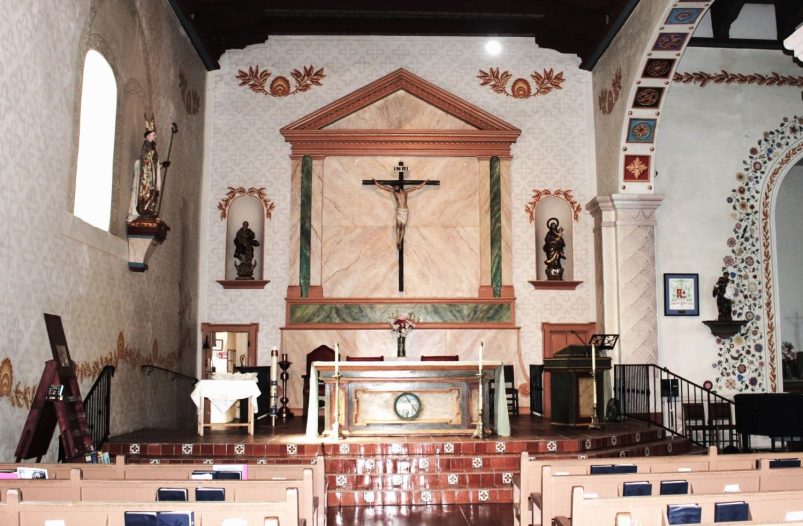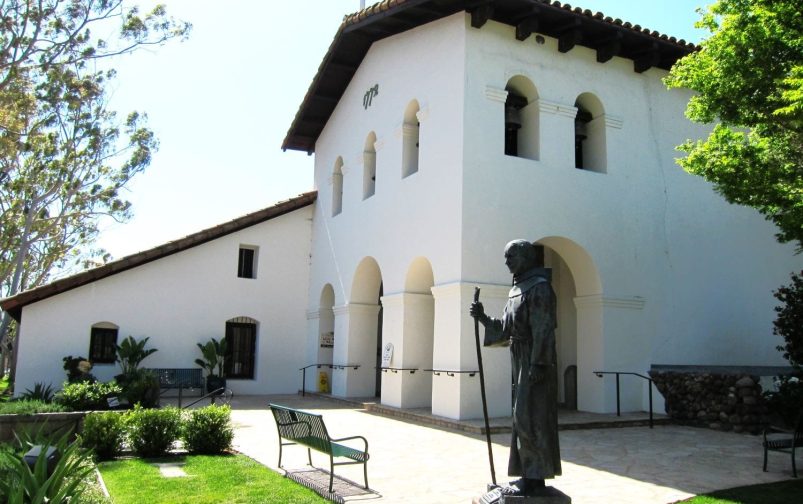San Luis Obispo was founded on September 1, 1772. As Governor Portolá and his men trudged northward in 1769 in their search for Monterey Bay, they were surprised by the number of bears seen at the mouth of a small river, and in a coastal valley beyond, which was promptly named the Valley of the Bears. The Spaniards killed several bears for food. Meticulously kept mission records state that, on a later hunt, Portolá’s men came back with 9,000 pounds of bear meat. The Spaniards generously shared the meat with hungry Indians, and that kindness paid dividends quickly after Father Serra founded the fifth mission in the Valley of the Bears. The first buildings were of adobe with thatched roofs, typical of the early missions.

Not all the natives were friendly. On three different occasions during the first two years of its existence, the San Luis Obispo Mission was attacked by hostile Indians who set the tule roofs afire with their flaming arrows. Then, the familiar mission roof tiles were developed, ending the threat immediately. Soon, other missions also decided to replace their thatched roofs with tile.
The Spanish Crown was in financial trouble long before the Mexican independence. In 1782, the King levied an assessment against the California missions. Although San Luis Obispo was still one of the smallest missions, it paid its fair share, the equivalent of $107.
Major building projects at San Luis Obispo began in about 1794, continuing for a generation, culminating in the completion of the quadrangle in 1819 and the arrival in 1820 of two mission bells made in Lima, Peru. Father Luis Martinez had charge of the mission for a remarkable 34 years. Under Mexican rule, he and his Indian wards suffered actual privation due to unceasing demands from the soldiers, who were openly accused of idleness by the good Padre.
Even so, his good humor and extreme dedication earned the respect of the military and the love of the Indians in his charge. There had never been much love between the California-born and the Spanish. Mexican law required the exile of all Spanish-born Administrators and Missionaries. Eventually, Father Martinez was forced to leave. Only five years later, the land reformers moved in.
As elsewhere, all mission lands were forfeited. In theory, the Indians were to receive a fair share, but, in practice, land titles fell to the politicians and their friends. In 1868, the mission church fell victim to a peculiar indignity, ending encased in a layer of milled lumber.
In recent years, good sense and prudent restoration have removed the wooden shell and given the church much of its original appearance, although the needs of a modern parish have caused its enlargement. The original Padres’ quarters are now a museum. A square block in the heart of the “City with a Mission” is all left to be seen of former greatness.
